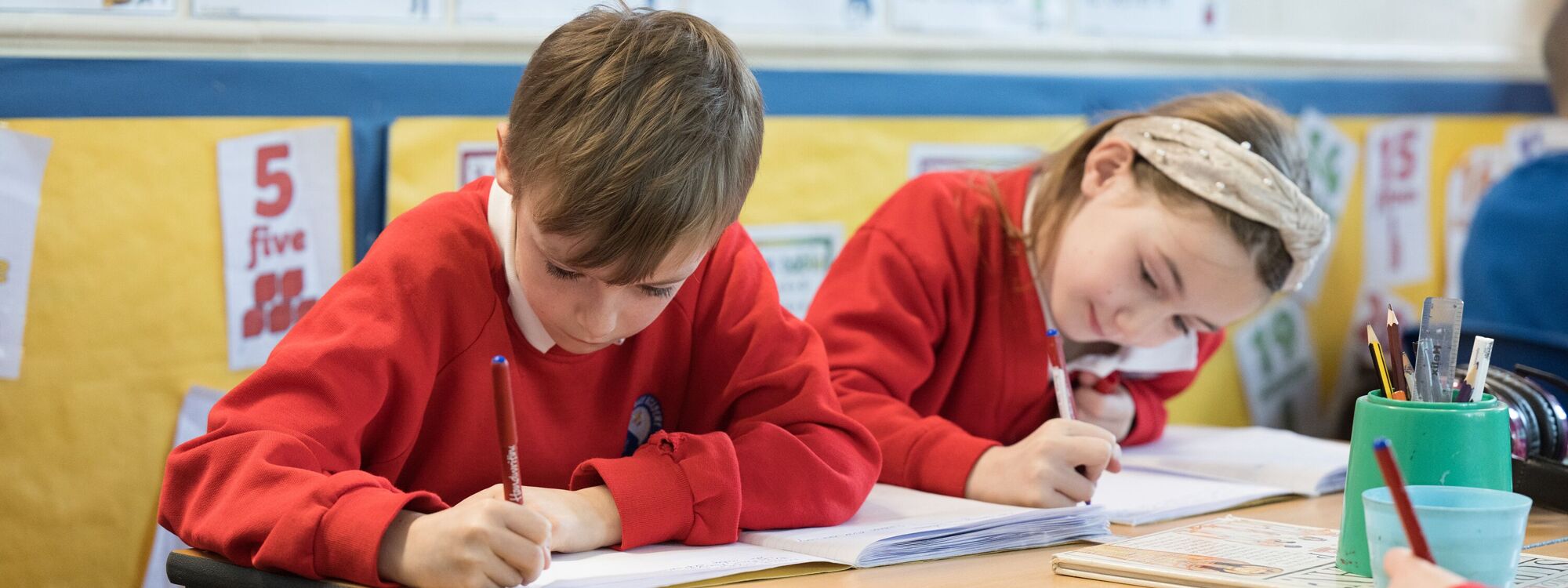English
Aims and objectives
The study of English develops children’s abilities to listen, speak, read and write for a wide range of purposes, using language to share and communicate ideas, views and feelings.
It enables children to express themselves creatively and imaginatively, as they become enthusiastic and critical readers of stories, poetry and drama, as well as non-fiction and media texts. Children gain an understanding of how language works by looking at and discussing its patterns, structures and origins.
Reading
From Y1 onwards, reading is taught using the VIPERS approach of whole class Guided Reading. This approach covers the key strands of reading: Vocabulary, Inference, Prediction, Explanation, Retrieval and Sequencing (KS1) or Summarising (KS2). Pupils will have regular opportunities to engage in independent and shared reading and teachers provide pupils with daily read aloud sessions where pupils will be encouraged to respond to the text in a variety of different ways. The goal of guided reading is to enable learners to become independent, able readers, who understand and appreciate texts on their own without the teacher’s help. Class teachers plan a guided reading schedule to ensure they have built in opportunities to listen to all pupils read.
Cross-curricular reading at Starbeck
Language is the medium through which we access all learning and at Starbeck we expect English skills to be used in all areas of the curriculum including mathematics. Much of the reading accessed by the children will have cross-curricular links because it will be linked to thematic work in a variety of different subjects including science, history and geography. Whole class guided reading texts are carefully selected to enhance the curriculum and support the children’s knowledge acquisition. Teachers choose whole class shared texts and reading books which reflect a wide range of cross curricular links, especially PSHE. Teachers will seek to take advantage of opportunities to make cross curricular links to the English curriculum as often as possible and also plan for pupils to practise and apply the skills, knowledge and understanding acquired through English lessons to other areas of the curriculum.
Speaking and Listening
Oracy is a key focus throughout Starbeck School and is prioritised in all areas of the curriculum. The quality and variety of language that pupils hear and speak are key factors in developing their vocabulary, grammar and understanding for reading and writing. Pupils will be assisted in making their thinking clear to themselves and to others and teachers will ensure they build secure foundations by using discussion to probe and remedy misconceptions. Pupils will also be taught to understand and use the conventions for discussion and debate.
Spelling, Punctuation and Grammar (SPaG)
We incorporate the teaching and learning of these areas into our reading and writing lessons or teach them discretely when children are learning a new skill or gaining new knowledge. Children are also involved in daily lessons to revise, learn and practise their spelling knowledge in context through the use of the ‘Spelling Shed’ spelling scheme from Year 2. Lessons are based around talk and discussion activities which promote children’s observation and use of words. As well as being very actively involved in their learning, pupils are given tools and techniques to learn how to learn about spelling, rather than remembering lists.
Writing
Writing is taught through the teaching approach Jane Considine’s ‘Write Stuff’. In daily lessons, teachers initiate pupil interest and engagement through a variety of different media, e.g. quality texts, drama, artefacts, music, film, pictures, newspaper articles. Sentences are modelled by the teacher and written by the pupil over a series of lessons and there is then the opportunity for children to practise a given skill. ‘Experience sessions’ are planned in along the way to enhance the children’s understanding of the genre, e.g., film, drama, reading comprehensions. The children use their learned skills in short burst writing throughout a unit and a longer sustained pieces of independent writing at the end.
Handwriting
We use ‘Letter-Join’ as the basis of our handwriting policy that covers all the requirements of the 2014 National Curriculum. At the end of Key Stage 2 all pupils should have the ability to produce fluent, legible joined-up handwriting, and to understand the different forms of handwriting used for different purposes. We aim to make handwriting an automatic process that does not interfere with creative and mental thinking. Children are encouraged to write cursively from an early age and to practice the correct formations including the ‘lead-ins’. By Year Two we expect most children to be writing with a legible cursive style where the letters are of a regular size.
